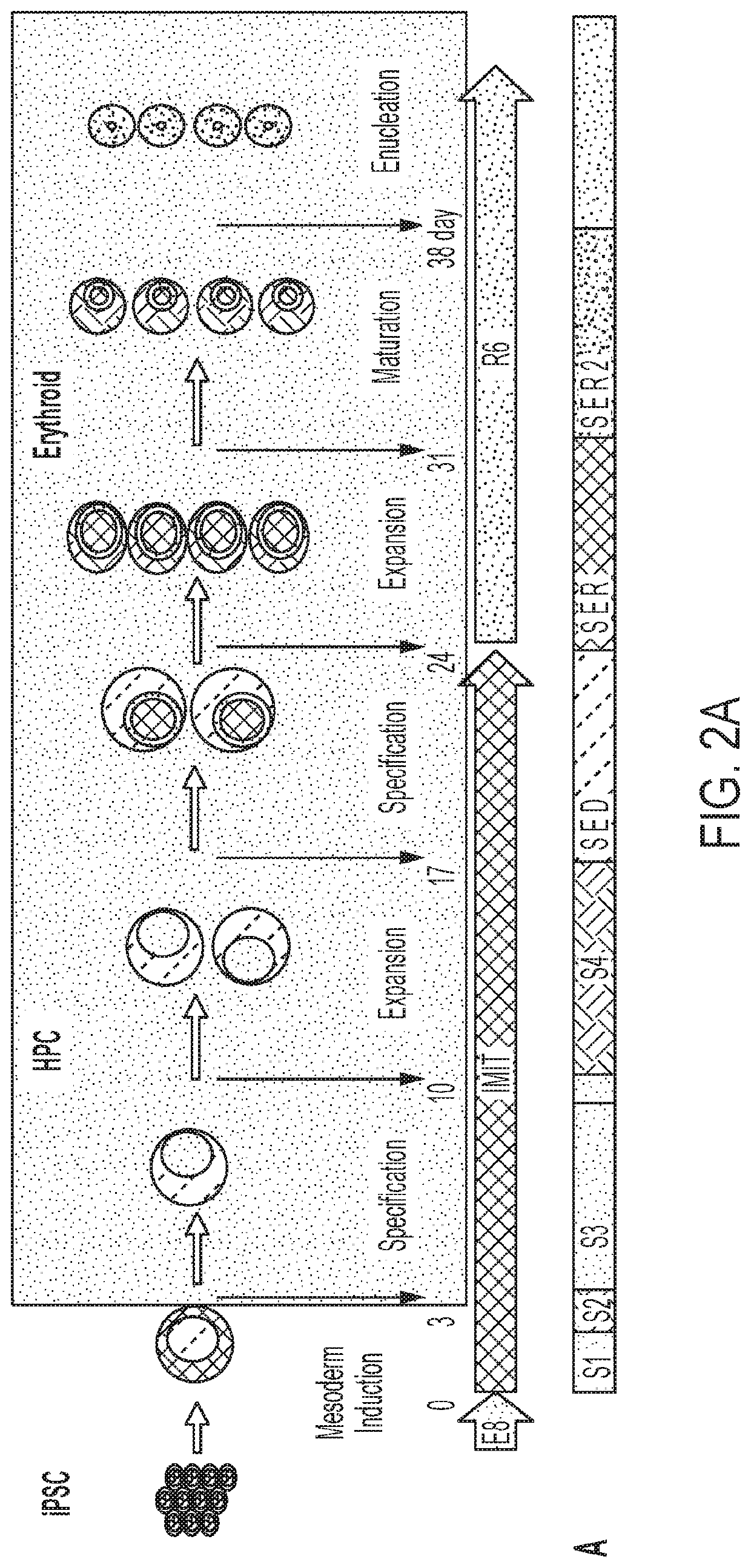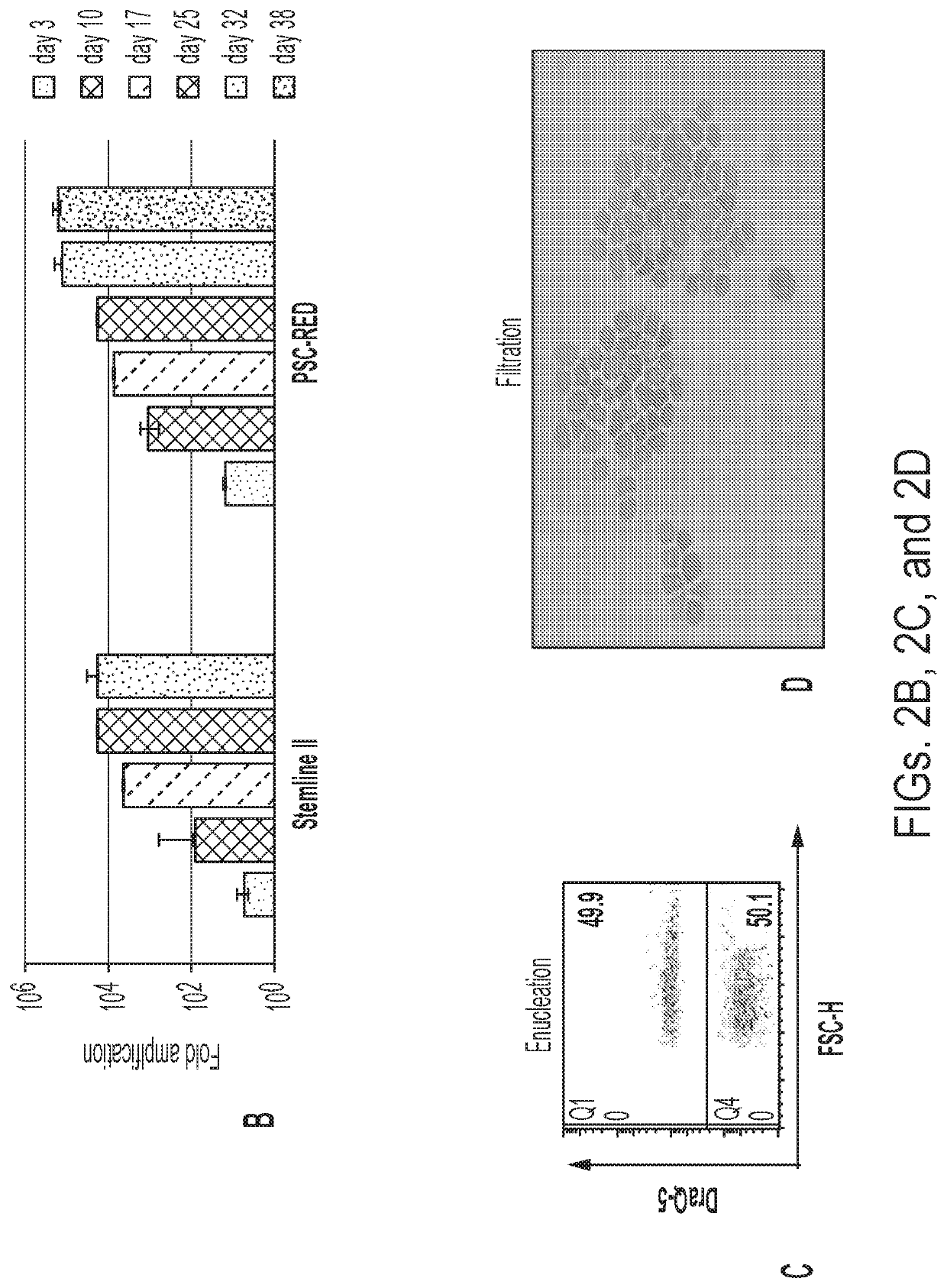Red blood cells expressing von willebrand factor protease and methods of use thereof
a technology of von willebrand factor and protease, which is applied in the direction of immunoglobulins, peptides, drugs, etc., can solve the problems of life-threatening microvascular thrombosis and clinical manifestations, cumbersome procedures, and significant toxicities
- Summary
- Abstract
- Description
- Claims
- Application Information
AI Technical Summary
Benefits of technology
Problems solved by technology
Method used
Image
Examples
example 1
[0120]This example describes the materials and methods used in the following examples.
ADAMTS13-GPI Construct
[0121]The cDNA coding first 745 amino acids of the ADAMTS13 protein joined with the DAF gene GPI anchor sequence (37 amino acids) were synthesized by GeneScript (Piscataway, N.J.). The synthesized fusion gene sequence then cloned into a derivative of the pZDonor-AAVS1 Puro vector (Sigma-Aldrich, The Woodlands, Tex.) containing the mini-LCR, alpha-globin promoter and alpha-globin gene by replacing alpha-globin gene region via AatII and SgrdI restriction sites. The plasmid contains homologous arms to the AAVS1 safe harbor site.
CRISPR-Cas9 RNP
[0122]The crRNA targeting the human AAVS1 safe harbor site designed using an online selection tool CRISPOR (Haeussler et al. (2016); Genome Biol. 17, 148) and synthesized (sequence: G*U*C*CCUAGUGGCCCCACUGU) with attached modified EZ linker (Synthego, Redwood City, Calif.). The nucleotides marked with asterisks have 2′-O-methyl analogs and 3′...
example 2
[0150]Blood transfusions have been clinically useful for more than 100 years, and the idea that RBCs could be modified to serve as more than just oxygen carriers is almost as old (Villa, C. H. et al. (2016); Adv. Drug Deliv. Rev. 106, 88-103). Drug delivery through therapeutic RBCs as compared to direct injection in the plasma has generated considerable interest because the approach could lengthen the half-life of the therapeutic agent in circulation, spatially restrict the drugs to the lumen of the cardiovascular system which can decrease toxicity by limiting diffusion outside of blood vessels, and shield the drug from the immune system which also decreases the risks of allergy and contributes to increasing half-life as demonstrated by studies on asparaginase encapsulation inside RBCs.
[0151]Initial efforts to modify RBCs focused on altering their surface antigens to make them more universal, loading them with various drugs, and decorating them with antibodies or other surface molec...
PUM
| Property | Measurement | Unit |
|---|---|---|
| Fraction | aaaaa | aaaaa |
| Expansion enthalpy | aaaaa | aaaaa |
Abstract
Description
Claims
Application Information
 Login to View More
Login to View More - R&D
- Intellectual Property
- Life Sciences
- Materials
- Tech Scout
- Unparalleled Data Quality
- Higher Quality Content
- 60% Fewer Hallucinations
Browse by: Latest US Patents, China's latest patents, Technical Efficacy Thesaurus, Application Domain, Technology Topic, Popular Technical Reports.
© 2025 PatSnap. All rights reserved.Legal|Privacy policy|Modern Slavery Act Transparency Statement|Sitemap|About US| Contact US: help@patsnap.com



